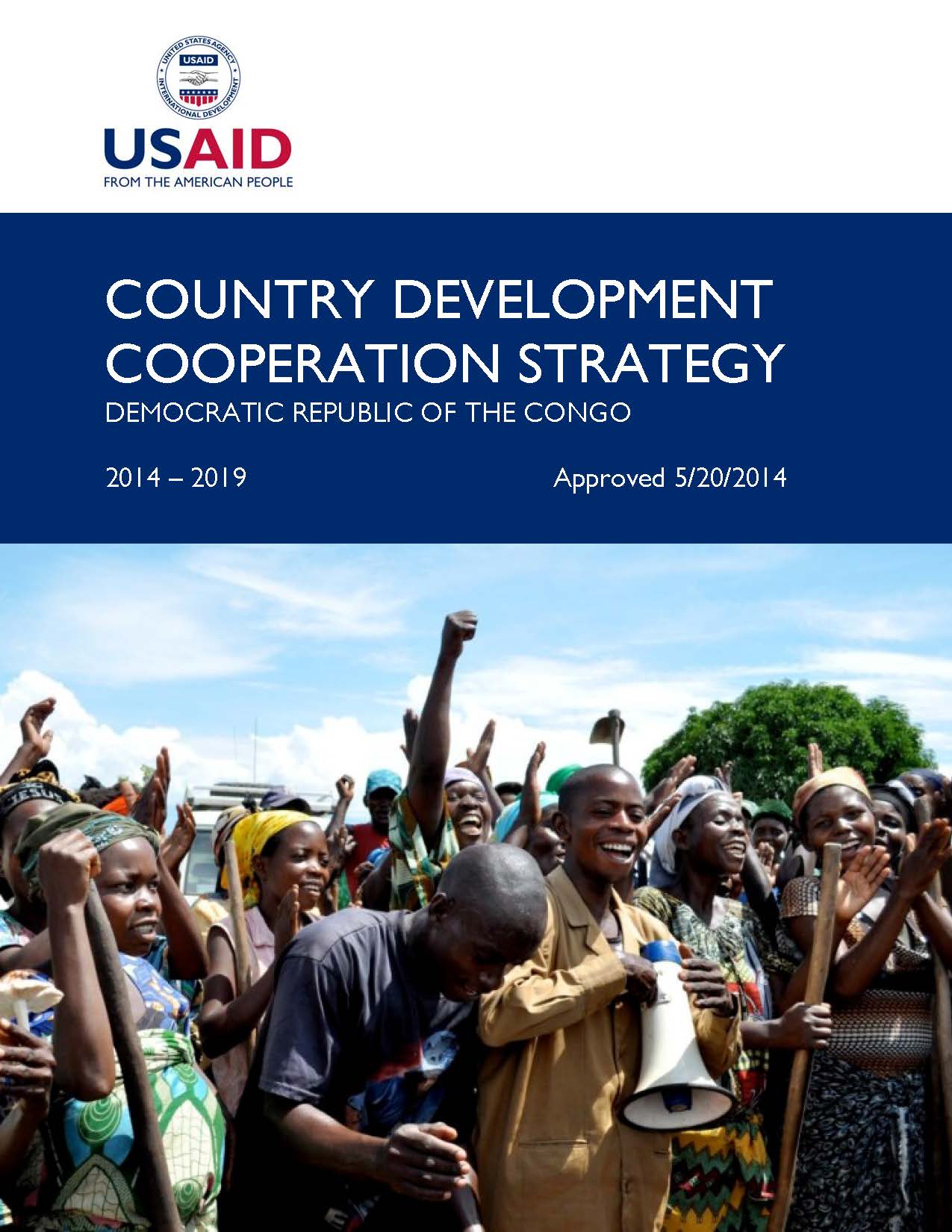Many people are accustomed to thinking about the Democratic Republic of the Congo (DRC) as a problem that will be fixed by addressing specific development challenges in isolation. This train of thought fails to take into account both the incredible potential of the country and the need to address the root causes of extreme poverty and violence throughout the country.
As Congo scholar, Raymond Gilpin, testified before the Senate Foreign Relations Committee in February 2014, “With the right approach, the DRC could be an opportunity for substantial gains not only in the country, but across the sub-region.” In order for this to happen, development actors must implement a coordinated strategy that improves political and economic governance while increasing human capacity and wellbeing. Eradicating extreme poverty and decreasing the fragility of the country cannot occur without addressing questions of legitimacy, weak and corrupt institutions, and entrenched power dynamics.1 Strengthening Congolese institutions’ ability to transparently respond to citizen needs will be critical to establishing legitimacy. Responsive institutions will further stability and thereby attract the investment needed by this country for growth.
USAID, and the U.S. Government writ large, recognize that transformational change in the DRC will require long-term investment and focus. USAID’s 20-year vision is of a country where the Congolese take charge of their future to manage and sustain growth with their own human, natural, and financial resources. There are currently key opportunities to accelerate achieving this vision. USAID will capitalize upon these opportunities, while working towards the vision, through the five year goal of a long-term transition to more effective and empowering development in the DRC supported. In order to achieve this, USAID will support three Objectives under this Country Development Cooperation Strategy (CDCS):
- Development Objective (DO) 1: Selected national level institutions more effectively implement their mandates.
- Development Objective (DO) 2: Lives improved through coordinated development approaches in select regions.
- Transition Objective (TO) 3: Foundation for durable peace strengthened in eastern DRC.
There is increasing recognition that development in the country will only be sustainable if the Congolese leaders and people demonstrate an active interest in and ability to take a leadership role in advancing the public good versus private gain. Reformers are in place that are improving the governance of the country. By assisting these reform efforts, USAID is in a position to strengthen the institutions whose very weakness has contributed to, the country’s fragility and that ultimately leads to poor social wellbeing and extreme poverty. Therefore, USAID will invest in a strategy to strengthen Congolese institutions, at both the national and sub-national levels, that strengthen the social compact between citizens and the state. Under DO 1, USAID will support national-level public and private institutions in identifying development challenges as well as addressing those challenges by assisting Congolese organizations to create policies and procedures, implement solutions, and source funding. DO 2 will conduct similar work with provincial and local institutions, while also emphasizing the linkages between citizens and the state. Focused on the supply and demand side of service provision, DO 2 will ensure quality services are available to the population while increasing citizen’s knowledge and affordability of the services. Lastly, under the TO 3, USAID will strengthen the foundation for peace in eastern DRC by identifying root causes of violence and implementing programs to address them, while ensuring that citizen’s basic needs are being met. The promotion of gender equality through national and local leadership, civil society, improved governance, and gender-sensitive institutions is integral to the larger success and sustainability of USAID’s efforts on these fronts.
The DRC is both at a crossroad and under the spotlight with a U.S. and United Nations Special Envoy focusing on bringing peace and security in the region. The essential remaining question is the commitment of the Government of DRC and its people to peace, security, and prosperity. This strategy is predicated on a positive engagement of the Congolese government and people on development goals.
Differences from Past Strategies:
- Country ownership of development solutions, particularly through institution strengthening, is a key component of the strategy across all objectives. Not only will this involve public institutions, but civil society and the private sector will also play critical roles in defining development challenges and implementing solutions.
- Strengthening the social compact between citizens and the state, so that the state is seen as responsive to citizen needs, is a renewed focus in this strategy. In particular, it will be critical for women and youth to have a voice in directing this process.
- Interventions are focused geographically. DO 1 focuses on national level institutions; DO 2 focuses on three provinces: Kasai Occidental, Kasai Oriental, and Katanga; and, TO 3 focuses on conflict-affected areas of eastern DRC: North and South Kivu, northern Katanga, and parts of Maniema and Orientale. Finally, under DO 2, programs will address the large urban centers of Kinshasa, Lubumbashi, and Kisangani.
- As a cross-cutting strategy, USAID’s 2015-2019 CDCS increases collaboration among technical sectors. For example, democracy and governance work will support gains in health and education. Public-private partnerships will support a holistic development approach that addresses multiple technical areas. USAID/DRC will not only demonstrate cross-sector coordination in project design and implementation but will also seek opportunities for Mission-wide learning so that challenges faced by one sector inform programming in other sectors.
- Also as a cross-cutting strategy, USAID will pay special attention to development conditions which affect the success of programming, regardless of sector – gender, youth, and extreme poverty.
- USAID staff will increasingly influence and coordinate development actors- including other donors, the private sector, and the Government of the DRC.
- USAID/DRC will invest in strategic learning approaches, such as the Collaborating, Learning, and Adapting (CLA), and correct course as appropriate.
Read the full report [pdf]









Comment
Make a general inquiry or suggest an improvement.